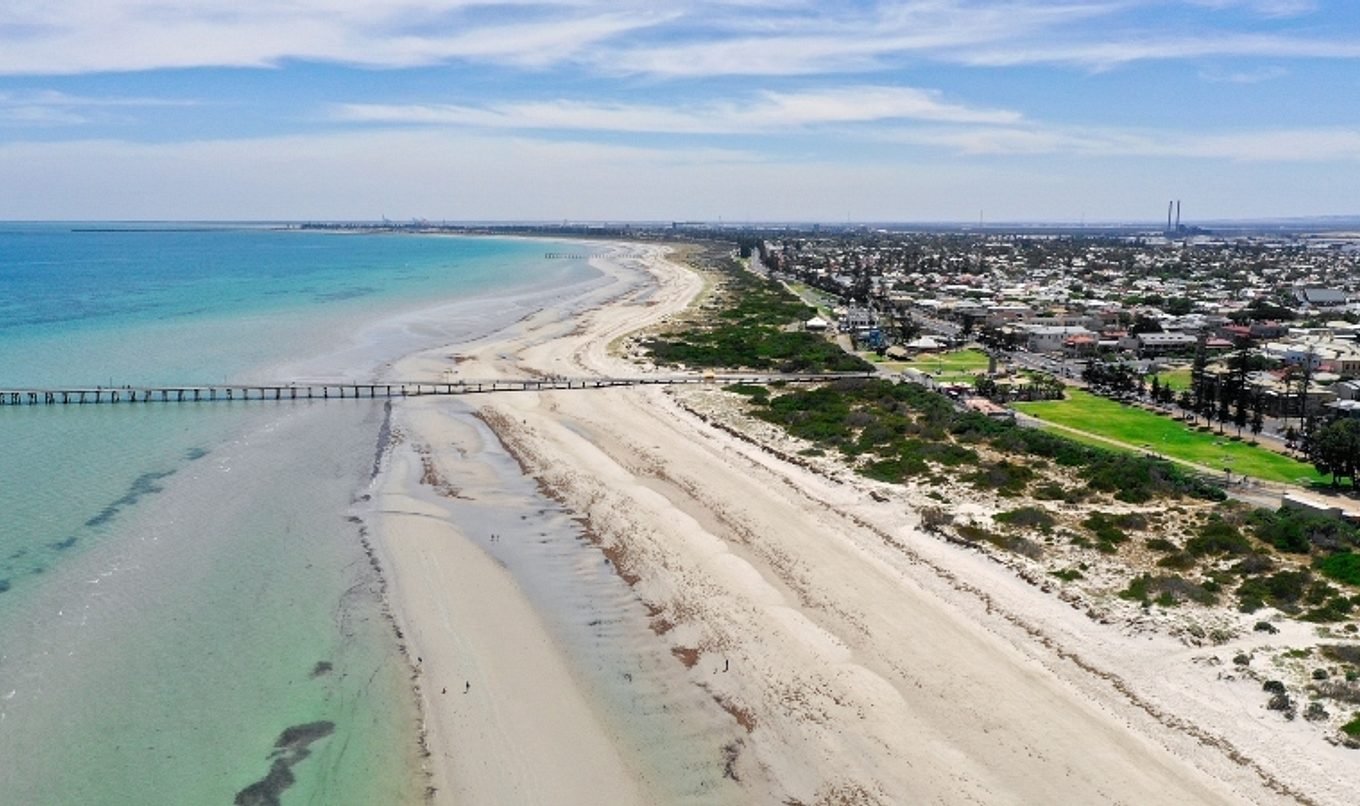Sand movement from Semaphore to West Beach
Fast facts about the sand movement from Semaphore to Adelaide’s southern beaches.

West Beach and Henley Beach South are losing sand due to erosion. The Department for Environment and Water currently moves sand using trucks from where it builds up at Semaphore to replenish these eroding beaches. A sand recycling pipeline is planned to move sand more efficiently, and additional sand from outside of Adelaide’s beach system will be added to beaches as a top up.
Fast facts
- Why can’t Adelaide’s coastline just be left alone? Adelaide’s roads, houses and other infrastructure were built along the foreshore before it was commonly understood that Adelaide’s sand naturally moved south to north. Maintaining a stable coastline by moving and recycling sand allows us to enjoy sandy beaches, as well as saving South Australians from the costs of damaged assets and infrastructure.
- Why does sand need to be moved? From all the studies and evidence, the most practical and cost-effective ways to deal with erosion on Adelaide’s southern beaches are to recycle sand from Adelaide’s northern beaches, and bring in additional sand from external sources.
- What about the health of Adelaide’s northern beaches? Semaphore and Largs Bay have large amounts of sand built up due to the natural drift of sand from south to north. As sand moves north along Adelaide’s coast, the northern beaches will continue to build up.
- How’s the health of Adelaide’s southern beaches? West Beach and Henley Beach South are eroding quickly. Today, beach levels at West Beach and Henley Beach South are lower than at any other time since records began. The beaches between Kingston Park and Glenelg have been successfully maintained by a sand pumping system along that part of the coast since 2013.
- Why not build groynes to hold sand on beaches? Structures like groynes, breakwaters and seawalls can be used to help trap sand and protect infrastructure. But to manage Adelaide’s coastline well groynes are not the answer. They are costly to install, require large quantities of sand, interrupt recreational beach use, can be a safety hazard, are visually unappealing and can cause the coast on the northern side of the structure to become starved of sand. By focusing on moving sand, long sandy beaches can be achieved without the additional cost and side-effects of expensive structures.
- Why is this not ‘sand mining’? Sand is being recycled not ‘mined’. Recycling is the best way to sustainably manage a finite and incredibly valuable resource, and has been successfully carried out for nearly 50 years along South Australia’s metropolitan beaches.
- When will the sand recycling pipeline be built? Construction will commence in 2021–22 after the design and approval phase. The pipeline is expected to be operational by 2023.
- Has an environmental impact assessment been done? An independent assessment of the impact of moving sand from the northern beaches is being undertaken. The first phase assessed the impact of moving sand from the northern beaches in the short term before the sand recycling pipeline is built. It confirmed that the northern beaches will recover quickly and continue to grow despite the short term impacts of moving sand. The second phase includes assessing the longer term impacts of the sand recycling pipeline implementation.
- How can a member of the community find out more? The State Government meets regularly with community representatives and council to help guide the Semaphore works. Local residents will be kept informed. To find out more and subscribe for updates visit the Adelaide beach works website.
Sand movement works from Semaphore to West Beach are resuming in May 2021. The State Government is delivering the Securing the Future of our Coastline project to restore and maintain the beaches at West Beach and Henley Beach South. As part of the program, a sand recycling pipeline will be built from Semaphore to West Beach, and about 500,000 cubic metres of external sand will be delivered from outside of the Adelaide beach system.
This article was originally published in September 2019 and was last updated on 12 March 2021.

